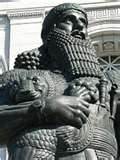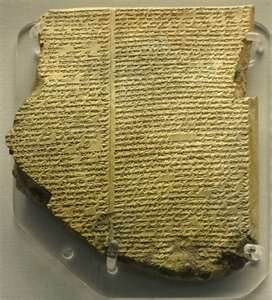The Library of Ashurbanipal
The first concerted effort to build a library is thought to have been that of King Ashurbanipal of Assyria, who gathered a very large number of cuneiform texts in a collection at Nineveh, the Assyrian capital. His name translates as "Ashur has made another son." Ashur was also a city in ancient Assyria.
The library, rediscovered in 1850, contained about 1,200 distinct cuneiform texts spread across up to 30,000 clay tablets. Ashurbanipal, originally trained as a scribe, had a passion for learning and understanding, as evidence by his huge collection of writings on a wide variety of topics. He could read and write, which most kings at the time could not, and he was adept at mathematics.
In addition, the texts that survived have given scholars a great understanding of how people lived in the Ancient Near East: their daily lives, their religion, their wars, and their story-telling. A copy of the Epic of Gilgamesh was found in Ashurbanipal's library, as was a long list of ancient rulers. The sheer number of tablets found in the library proved helpful in deciphering cuneiform.
|
|
Social Studies for Kids
copyright 2002–2026
David White



 Ashurbanipal ruled from 669 to 631 B.C., with his capital at Nineveh. He was known as a cruel king, especially to opponents he defeated. (The
Ashurbanipal ruled from 669 to 631 B.C., with his capital at Nineveh. He was known as a cruel king, especially to opponents he defeated. (The  The library also had some of the features that we would expect today's libraries to have but would have been novel in ancient times, such as the tablets being grouped by subject (history and government, geography and science, literature and word lists, religion), those groups being in separate rooms with a catalog of that room's contents. Ashurbanipal's library even had a room for classified materials, which were buried deep beneath the palace in a separate room altogether and would have been guarded, no doubt.
The library also had some of the features that we would expect today's libraries to have but would have been novel in ancient times, such as the tablets being grouped by subject (history and government, geography and science, literature and word lists, religion), those groups being in separate rooms with a catalog of that room's contents. Ashurbanipal's library even had a room for classified materials, which were buried deep beneath the palace in a separate room altogether and would have been guarded, no doubt.
